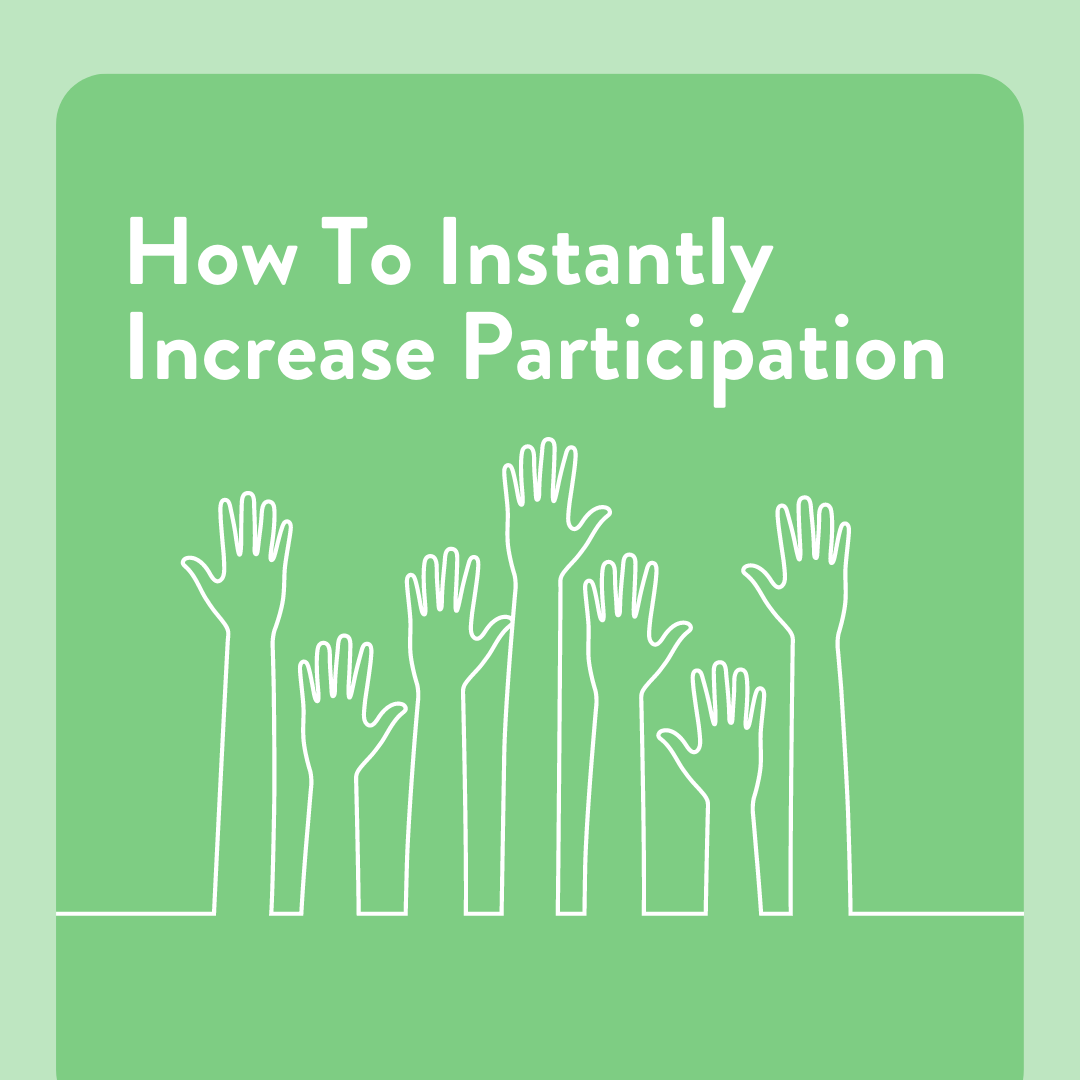Getting every voice in the room during a conversation may seem tricky, but with these three steps, we can guarantee a broader range of voices and input in any session.
Here’s what to do
Instead of simply asking a question and having answers roll in right away, give your group some simple structures so they can have a moment with their thoughts and begin to reflect on the question.
- After asking your question or giving the group a prompt, have everyone take one minute to write their thoughts down on paper.
- Once that’s done it’s time to have everyone pair up with a partner for a quick conversation. (For virtual sessions, pop folks into breakout rooms with one other person.)
- After the pair conversations are done, now is the time to ask for answers.
Here’s how to do it

This sequence goes from a solo activity → a pair activity → a full-group activity. By having to work through their thoughts alone and with a buddy, we provide time and space for participants to hone in on responses which will help everyone feel more confident sharing their thoughts with the group.
Why It Works
Having to say an idea, out loud, in front of the entire group, is the most socially risky form of sharing. And when we ask a question and immediately start taking in answers, we’re not setting our groups up to share their best ideas—we’re asking them to share the first and fastest.
Also, we end up unintentionally prioritizing the folks who are willing to just throw an idea out there, the early participators, the folks who will always share, no matter what. Slowing down the process increases the likelihood that a wider variety of people will participate.
By writing ideas down, everyone becomes aware that they have ideas and get a chance to spend a moment with their thoughts.
In pairs, everyone gets to share and have their ideas heard by at least one other person. Pair conversations are a great way to get everyone to participate, and pairs can build off of each other’s ideas.
Then, when you’re back with the full group, ask the group for ideas that came up. Could be theirs, their partners, or a hybrid idea that spawned from their conversation. Regardless, the idea won’t have just popped into their head, which will dramatically increase the quality of the conversation that follows.
Participation isn’t always about sharing out loud in front of the full group. What we hope to get from our participants is their input and investment in the conversation.
Using this sequence increases the variety of ways we invite participation. This ensures participants who may otherwise have been left out contribute while increasing the quality of shares from everyone.
Want to learn all the secrets to participation? Sign up for the fall event series!
